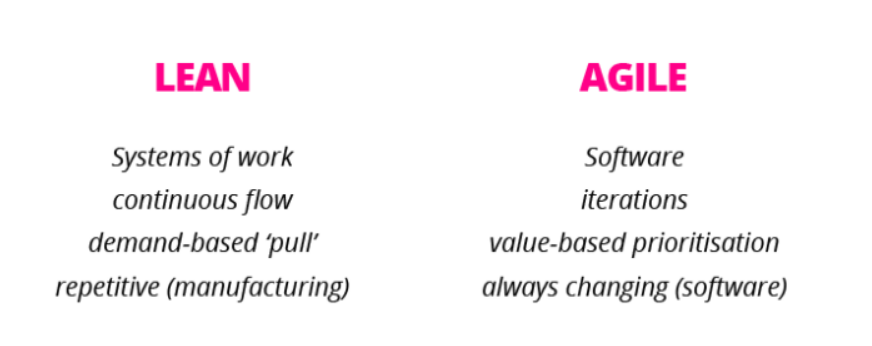Is Scrum Inherently Lean?
Lean software development is the result of the translation of lean manufacturing into the software and systems development space. Whether it falls underneath the Agile umbrella is hotly debated in the community, yet it really doesn’t matter when it’s all said and done. This is because the seven principles of lean are inherently reflected in Agile methods, but perhaps in different ways and with different lexicons or naming conventions.

Eliminate Waste
The first principle of Lean is to eliminate waste. From unclear requirements, unused documentation, hand-offs, wait time, and so forth, lean practitioners seek to reduce or eliminate altogether these wastes from the process. The Scrum framework echoes this lean sentiment by providing the retrospective so that a team may discover and fix anything that’s not working well. You’ll often hear teams discussing subjects such as wasteful documentation, overbearing and/or manual processes, too many defects, and other such issues in the retrospective.
Focus on Collaboration
Both Scrum and Lean is the focus on cooperation between employees. It defines the success of the method. In both methods, the people who perform the tasks are more important than the tools they use.
Value Driven
When it comes to both Scrum and Lean, nothing is more important than the final result. This result must create value for the customer and is the only goal of the development process. Scrum allows the customer to constantly re-adjust his requirements, while Lean involves the manufacture of the product in such a way that there is no waste. The customer should get exactly what he expects.
Decide as Late as Possible
In any project, people know the most about the project at the end of the project. Scrum teams would rather make well-informed decisions; therefore, they do not make decisions about every requirement up front. This is a manifestation of the fourth value of Lean: decide as late as possible.
Emphasize Continuous Improvement
Scrum and Lean also adhere to the principle of continuous improvement, also known as Kaizen in Lean. Both focus on constantly learning and adapting. This is an essential aspect, because creating value for the customer is the top priority.
Strive for Fast Delivery
Lean says deliver fast; in Scrum we deliver at most every 30 days, while many teams deliver even faster than that. Lean says empower the team, and so does Scrum. Lean says that integrity should be built into the system; Scrum answers this by requiring a team to define done with a customer.
Eliminate Bottleneck
Finally, Lean guides us to see the whole—how the entire value stream, or chain of events leading to customer value, operates. Any bottlenecks should be removed immediately, and teams should be staffed so that they can complete finished product increments. Scrum reflects this by guiding us to create dedicated, cross-functional teams that conduct retrospectives. Such retrospectives help us unearth bottlenecks (or obstacles as called in Scrum) so that they can be eliminated.
Other Agile & Scrum Articles
- Comprehensive Scrum Guide
- What are Scrum’s Three Pillars?
- What is Agile Software Development?
- Scrum in 3 Minutes
- What are the 5 Scrum Values?
- What is the Evolution of Scrum?
- Classical Project Management vs Agile Project Management